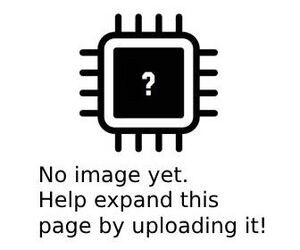More actions
| MacBook Pro A2251 no Backlight on display repair | |
|---|---|
| Device | MacBook Pro A2251 |
| Affects part(s) | Motherboard |
| Needs equipment | multimeter, soldering iron, soldering station |
| Difficulty | ◉◉◉◌ Hard |
| Type | Soldering |
This article is a stub. You can help Repair Wiki grow by expanding it
Problem description
Identifying and solving backlight issues on the 820-01949 logic board, as well as similar boards from 2016-2020. A MacBook Pro with no backlight on the display is experiencing an issue where the screen remains dark even though the computer is powered on and operational. This means that while the computer itself may be functioning, the display is not emitting any light, making it extremely difficult or impossible to see the content on the screen. Shining a strong light on the display at an angle might reveal that the content is indeed present, but the backlight is not illuminating it.
Symptoms
- The display appears completely dark, with no visible content or backlight illumination.
- Occasionally, the backlight might flicker or flash briefly when the MacBook Pro is powered on or waking from sleep, but it remains dark after these brief instances.
- Connecting the MacBook Pro to an external monitor or TV results in a functional display on the external screen, confirming that the computer itself is working correctly.
Solution

Diagnostic Steps
This issue can be caused by multiple factors, you need to determine which one is present in your situation.
Check for Backlight Output Short
- Measure for a short to ground on backlight output (PPVOUT_LCDBKLT_F).
- Use C8471 (Figure 1) or adjacent capacitors for measurement; unplug the display connector to rule out issues with the TCON board or LED strip.
- Proceed to "Backlight output shorted to ground" repair steps if a short is present.
Test with Known Working Display
- If no short is found and there's no liquid damage history, test with a known working display.
- If backlight works, proceed to "Device has backlight output on a known good display, but not on the originally installed display" steps.

Check U8400 and its circuit
- Examine U8400 if corroded along with adjacent corroded components.
- Ensure that the backlight circuit has its input voltage (VIN) by measuring on BOTH SIDES of F8400 (Figure 3), which is the backlight fuse.
- Voltage on both sides of the fuse should be equivalent to PPBUS_G3H.
- The backlight fuse can blow in response to a previous short to ground in the backlight circuit, or due to the screen being plugged in without the battery disconnected.
- Rarely, the backlight fuse can become open (blown) due to development of sulfur deposits on the fuses' filament , or due to micro manufacturing defects on the fuses filament.
- If the backlight fuse is blown, check for a short on backlight output (PPVOUT_S0_LCDBKLT_F) and on backlight input (PPVIN_S0SW_LCDBKLT_F). If the fuse is blown, proceed to the "Backlight fuse (F8400) blown in the absence of a short to ground" repair steps below If voltage is normal on both sides of the backlight fuse, proceed to the next step.
- Check that the backlight circuit is being enabled. The screen will need to be connected for the enable signal to be sent out.
- With the board on your bench, with a known good screen connected, measure voltage on pins 1 and 2 of R8442.
- You should have ~3.3v. Low voltage on pin 2 of R8442 (Figure 4) is suggestive of an issue with U8400.
- If you have 0v on pin 1 of R8442, the backlight circuit is not being told to turn on, which raises the possibility of a CPU issue, or an issue with the display cable/connector.
- If EDP_BKLT_EN is missing, U8400 is NOT the cause of the issue.

Repair Steps

Backlight Output Shorted to Ground
Identify and replace the shorted component. Check with and without the display connected. A short is commonly caused by a shorted capacitor. Inject 10v at 5 amps, thermally image the board, or use comparable short detection methods.
Device has Backlight Output on Known Good Display, But Not on Originally Installed Display
Replace the display assembly.
Corroded U8400
If U8400 is corroded or adjacent components are corroded, replace them.
Check pins 9 and 10; if corroded, connect them to R8400; Pin 9 to Pin 4, Pin 10 to Pin 3 (Figure 4).
Backlight Fuse (F8400) Blown in Absence of Short to Ground
Replace the backlight fuse with a compatible replacement (0603 package, 3 amp, 32v fuse).
